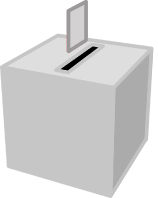 Turning out for the caucuses on March 26, 2016, is arguably the most important thing you can do to get Bernie Sanders elected. Fortunately, showing up is the hardest part.
Turning out for the caucuses on March 26, 2016, is arguably the most important thing you can do to get Bernie Sanders elected. Fortunately, showing up is the hardest part.
Precinct caucuses are neighborhood-sized meetings where Democrats register their vote for the Democratic nominee for president. It’s a very simple meeting and instructions will be given throughout.
When you arrive you will sign in and vote for your candidate. After votes are tallied for each candidate, there will be a short break where anyone can change their vote if there are not enough votes to have a delegate. Tallying will take place again after the intermission to decide the amount of earned delegates for each candidate.
Try to arrive early to find a parking place. Bring a pen, water, snacks (you’ll be finished by 1 pm, probably earlier). We recommend that folks pre-register if they can at. (demcaucus.com/register)It will save time, provide you with the address of your caucus location, and make the caucus process move more smoothly.
What happens at a caucus?
Everyone gathers to hear the rules and learn about the order of the caucus. They then break into individual precinct caucuses.
No earlier than 10:30 am, each precinct selects a precinct caucus chair who appoints a secretary and tally clerk. A tally is taken of presidential preferences and an allocation of delegates is determined (using the Delegate Allocation worksheet).
Running for delegate or alternate in your precinct caucus
Each precinct is given a set number of delegates and alternates to the County Convention and Legislative District (LD) Caucus. Each presidential preference and uncommitted group will gather separately in a brief sub-caucus to choose their number of delegates, followed by the number of alternates, if any. Voting is by written ballot.
Delegates and Alternates will be given a Certificate of Election which they need to present at the County Convention/LD Caucus. They need to be available to attend the May 1 Thurston County Democratic Party Convention (20th, 22nd, and 35th District Delegates will hold their Legislative District Caucuses at the Convention) and 2nd District Delegates will also meet April 17 for their Legislative District Caucus.
Allocation of delegates
The caucus will use the worksheet to calculate the number of delegates each Presidential preference will receive.
Divide the number of attendees by the number for each preference. Round down and distribute the remainder to the next highest candidate(s).
For example, Candidate A gets 12 out of 20; Candidate B gets 7 and Candidate C gets 1. A = .6, B= .35 and C= .05. If 5 delegates are allowed, A gets 3, B gets 2, C gets none.
Introduction of resolutions and platform proposals
Caucus attendees may introduce resolutions and platform proposals to be debated at the County Convention. They are not debated or voted on at the precinct caucus. It is asked that they be submitted in the proper form of a resolution and are legible.
Joe Nilsson is past chairman of the Thurston County Democrats.
Be First to Comment